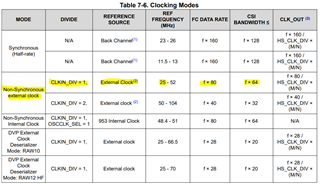We used 953/960 for our application.
Resolution: 720x2560
fps: 30
format: YUV422
The cable manufacturer want to know the operating frequency and attenuation requirements about the cable.
(1)How to caclute the data rate?
(2)Where can I get the attenuation requirements?
Thanks.





